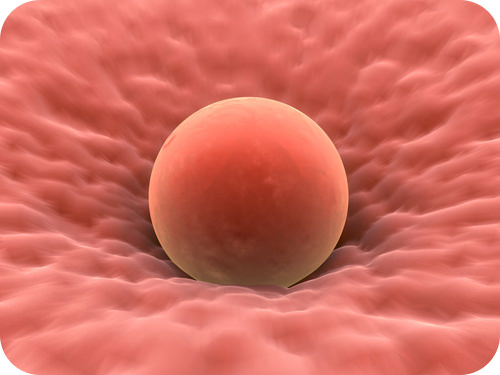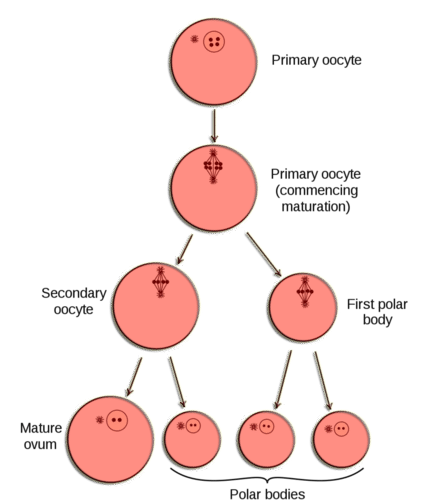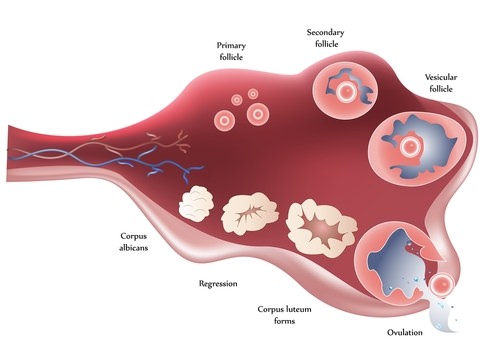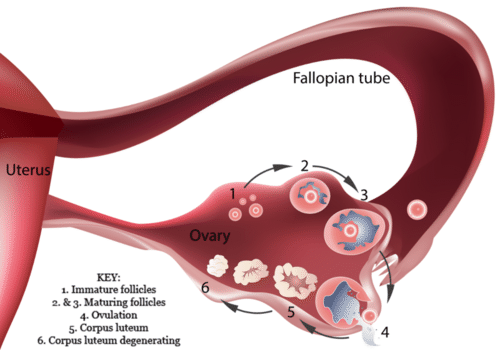13.59: Egg Cells
- Page ID
- 13530
\( \newcommand{\vecs}[1]{\overset { \scriptstyle \rightharpoonup} {\mathbf{#1}} } \)
\( \newcommand{\vecd}[1]{\overset{-\!-\!\rightharpoonup}{\vphantom{a}\smash {#1}}} \)
\( \newcommand{\dsum}{\displaystyle\sum\limits} \)
\( \newcommand{\dint}{\displaystyle\int\limits} \)
\( \newcommand{\dlim}{\displaystyle\lim\limits} \)
\( \newcommand{\id}{\mathrm{id}}\) \( \newcommand{\Span}{\mathrm{span}}\)
( \newcommand{\kernel}{\mathrm{null}\,}\) \( \newcommand{\range}{\mathrm{range}\,}\)
\( \newcommand{\RealPart}{\mathrm{Re}}\) \( \newcommand{\ImaginaryPart}{\mathrm{Im}}\)
\( \newcommand{\Argument}{\mathrm{Arg}}\) \( \newcommand{\norm}[1]{\| #1 \|}\)
\( \newcommand{\inner}[2]{\langle #1, #2 \rangle}\)
\( \newcommand{\Span}{\mathrm{span}}\)
\( \newcommand{\id}{\mathrm{id}}\)
\( \newcommand{\Span}{\mathrm{span}}\)
\( \newcommand{\kernel}{\mathrm{null}\,}\)
\( \newcommand{\range}{\mathrm{range}\,}\)
\( \newcommand{\RealPart}{\mathrm{Re}}\)
\( \newcommand{\ImaginaryPart}{\mathrm{Im}}\)
\( \newcommand{\Argument}{\mathrm{Arg}}\)
\( \newcommand{\norm}[1]{\| #1 \|}\)
\( \newcommand{\inner}[2]{\langle #1, #2 \rangle}\)
\( \newcommand{\Span}{\mathrm{span}}\) \( \newcommand{\AA}{\unicode[.8,0]{x212B}}\)
\( \newcommand{\vectorA}[1]{\vec{#1}} % arrow\)
\( \newcommand{\vectorAt}[1]{\vec{\text{#1}}} % arrow\)
\( \newcommand{\vectorB}[1]{\overset { \scriptstyle \rightharpoonup} {\mathbf{#1}} } \)
\( \newcommand{\vectorC}[1]{\textbf{#1}} \)
\( \newcommand{\vectorD}[1]{\overrightarrow{#1}} \)
\( \newcommand{\vectorDt}[1]{\overrightarrow{\text{#1}}} \)
\( \newcommand{\vectE}[1]{\overset{-\!-\!\rightharpoonup}{\vphantom{a}\smash{\mathbf {#1}}}} \)
\( \newcommand{\vecs}[1]{\overset { \scriptstyle \rightharpoonup} {\mathbf{#1}} } \)
\( \newcommand{\vecd}[1]{\overset{-\!-\!\rightharpoonup}{\vphantom{a}\smash {#1}}} \)
\(\newcommand{\avec}{\mathbf a}\) \(\newcommand{\bvec}{\mathbf b}\) \(\newcommand{\cvec}{\mathbf c}\) \(\newcommand{\dvec}{\mathbf d}\) \(\newcommand{\dtil}{\widetilde{\mathbf d}}\) \(\newcommand{\evec}{\mathbf e}\) \(\newcommand{\fvec}{\mathbf f}\) \(\newcommand{\nvec}{\mathbf n}\) \(\newcommand{\pvec}{\mathbf p}\) \(\newcommand{\qvec}{\mathbf q}\) \(\newcommand{\svec}{\mathbf s}\) \(\newcommand{\tvec}{\mathbf t}\) \(\newcommand{\uvec}{\mathbf u}\) \(\newcommand{\vvec}{\mathbf v}\) \(\newcommand{\wvec}{\mathbf w}\) \(\newcommand{\xvec}{\mathbf x}\) \(\newcommand{\yvec}{\mathbf y}\) \(\newcommand{\zvec}{\mathbf z}\) \(\newcommand{\rvec}{\mathbf r}\) \(\newcommand{\mvec}{\mathbf m}\) \(\newcommand{\zerovec}{\mathbf 0}\) \(\newcommand{\onevec}{\mathbf 1}\) \(\newcommand{\real}{\mathbb R}\) \(\newcommand{\twovec}[2]{\left[\begin{array}{r}#1 \\ #2 \end{array}\right]}\) \(\newcommand{\ctwovec}[2]{\left[\begin{array}{c}#1 \\ #2 \end{array}\right]}\) \(\newcommand{\threevec}[3]{\left[\begin{array}{r}#1 \\ #2 \\ #3 \end{array}\right]}\) \(\newcommand{\cthreevec}[3]{\left[\begin{array}{c}#1 \\ #2 \\ #3 \end{array}\right]}\) \(\newcommand{\fourvec}[4]{\left[\begin{array}{r}#1 \\ #2 \\ #3 \\ #4 \end{array}\right]}\) \(\newcommand{\cfourvec}[4]{\left[\begin{array}{c}#1 \\ #2 \\ #3 \\ #4 \end{array}\right]}\) \(\newcommand{\fivevec}[5]{\left[\begin{array}{r}#1 \\ #2 \\ #3 \\ #4 \\ #5 \\ \end{array}\right]}\) \(\newcommand{\cfivevec}[5]{\left[\begin{array}{c}#1 \\ #2 \\ #3 \\ #4 \\ #5 \\ \end{array}\right]}\) \(\newcommand{\mattwo}[4]{\left[\begin{array}{rr}#1 \amp #2 \\ #3 \amp #4 \\ \end{array}\right]}\) \(\newcommand{\laspan}[1]{\text{Span}\{#1\}}\) \(\newcommand{\bcal}{\cal B}\) \(\newcommand{\ccal}{\cal C}\) \(\newcommand{\scal}{\cal S}\) \(\newcommand{\wcal}{\cal W}\) \(\newcommand{\ecal}{\cal E}\) \(\newcommand{\coords}[2]{\left\{#1\right\}_{#2}}\) \(\newcommand{\gray}[1]{\color{gray}{#1}}\) \(\newcommand{\lgray}[1]{\color{lightgray}{#1}}\) \(\newcommand{\rank}{\operatorname{rank}}\) \(\newcommand{\row}{\text{Row}}\) \(\newcommand{\col}{\text{Col}}\) \(\renewcommand{\row}{\text{Row}}\) \(\newcommand{\nul}{\text{Nul}}\) \(\newcommand{\var}{\text{Var}}\) \(\newcommand{\corr}{\text{corr}}\) \(\newcommand{\len}[1]{\left|#1\right|}\) \(\newcommand{\bbar}{\overline{\bvec}}\) \(\newcommand{\bhat}{\widehat{\bvec}}\) \(\newcommand{\bperp}{\bvec^\perp}\) \(\newcommand{\xhat}{\widehat{\xvec}}\) \(\newcommand{\vhat}{\widehat{\vvec}}\) \(\newcommand{\uhat}{\widehat{\uvec}}\) \(\newcommand{\what}{\widehat{\wvec}}\) \(\newcommand{\Sighat}{\widehat{\Sigma}}\) \(\newcommand{\lt}{<}\) \(\newcommand{\gt}{>}\) \(\newcommand{\amp}{&}\) \(\definecolor{fillinmathshade}{gray}{0.9}\)
What's amazing about these cells?
Many things. A human egg cell. Just add sperm and you have the necessary ingredients for a new baby. What's amazing about these cells is that they are all produced before the girl is even born. Before the girl is even born, plans for the next generation have begun. And that is the start of an amazing process.
Egg Production
At birth, a female’s ovaries contain all the eggs she will ever produce. However, the eggs do not start to mature until she enters puberty. After menarche, one egg typically matures each month until a woman reaches middle adulthood.
Oogenesis
The process of producing eggs in the ovary is called oogenesis. Eggs, like sperm, are haploid cells, and their production occurs in several steps that involve different types of cells, as shown in Figure below. You can follow the process of oogenesis in the figure as you read about it below.
 Oogenesis. Oogenesis begins before birth but is not finished until after puberty. A mature egg forms only if a secondary oocyte is fertilized by a sperm.
Oogenesis. Oogenesis begins before birth but is not finished until after puberty. A mature egg forms only if a secondary oocyte is fertilized by a sperm.Oogenesis begins long before birth when an oogonium with the diploid number of chromosomes undergoes mitosis. It produces a diploid daughter cell called a primary oocyte. The primary oocyte, in turn, starts to go through the first cell division of meiosis (meiosis I). However, it does not complete meiosis until much later. The primary oocyte remains in a resting state, nestled in a tiny, immature follicle until puberty.
Maturation of a Follicle
Beginning in puberty, each month one of the follicles and its primary oocyte starts to mature (also see Figure below). The primary oocyte resumes meiosis and divides to form a secondary oocyte and a smaller cell, called a polar body. Both the secondary oocyte and polar body are haploid cells. The secondary oocyte has most of the cytoplasm from the original cell and is much larger than the polar body.
 Maturation of a Follicle and Ovulation. A follicle matures and its primary oocyte (follicle) resumes meiosis to form a secondary oocyte in the secondary follicle. The follicle ruptures and the oocyte leaves the ovary during ovulation. What happens to the ruptured follicle then?
Maturation of a Follicle and Ovulation. A follicle matures and its primary oocyte (follicle) resumes meiosis to form a secondary oocyte in the secondary follicle. The follicle ruptures and the oocyte leaves the ovary during ovulation. What happens to the ruptured follicle then?Ovulation and Fertilization
After 12–14 days, when the follicle is mature, it bursts open, releasing the secondary oocyte from the ovary. This event is called ovulation (see Figure above). The follicle, now called a corpus luteum, starts to degenerate, or break down. After the secondary oocyte leaves the ovary, it is swept into the nearby fallopian tube by the waving, fringelike end (see Figure below).
 Egg Entering Fallopian Tube. After ovulation, the fringelike end of the fallopian tube sweeps the oocyte inside of the tube, where it begins its journey to the uterus.
Egg Entering Fallopian Tube. After ovulation, the fringelike end of the fallopian tube sweeps the oocyte inside of the tube, where it begins its journey to the uterus.If the secondary oocyte is fertilized by a sperm as it is passing through the fallopian tube, it completes meiosis and forms a mature egg and another polar body. (The polar bodies break down and disappear.) If the secondary oocyte is not fertilized, it passes into the uterus as an immature egg and soon disintegrates.
Summary
- Immature eggs form in the ovaries before birth.
- Each month, starting in puberty, one egg matures and is released from the ovary.
- Release of an egg is called ovulation.
Review
- When does a female begin to produce her eggs?
- What is a polar body?
- Describe ovulation.
- Predict how blockage of both fallopian tubes would affect a woman’s ability to reproduce naturally. Explain your answer.
- Create a flow chart showing the steps in which an oogonium develops into a mature egg.
| Image | Reference | Attributions |
 |
[Figure 1] | Credit: Image copyright GRei, 2014, modified by CK-12 Foundation - Zachary Wilson Source: http://www.shutterstock.com License: CC BY-NC |
 |
[Figure 2] | Credit: User:Mysid/Wikimedia Commons Source: commons.wikimedia.org/wiki/File:Gray5.svg License: Public Domain |
 |
[Figure 3] | Credit: Image copyright GRei, 2014 Source: http://www.shutterstock.com License: Used under license from Shutterstock.com |
 |
[Figure 4] | Credit: Image copyright GRei, 2014, modified by CK-12 Foundation - Zachary Wilson Source: http://www.shutterstock.com License: Used under license from Shutterstock.com |

